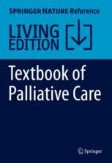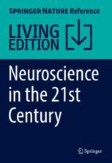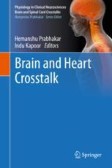Search
Search Results
-
Botulinum Neurotoxins and Chronic Low Back Pain
Chronic low back pain (cLBP) is the most common cause of medical disability. Treatment of cLBP is complicated due to its diverse etiologies and high...
-
Repetitive high-sustained gravitoinertial stress does not modulate pressure responsiveness to peripheral sympathetic stimulation
PurposeWe evaluated the hypothesis that repetitive gravitoinertial stress would augment the arterial-pressure response to peripheral sympathetic...

-
Analgesic Effects of Botulinum Neurotoxins: Data from Animal Studies Volunteers
Recent discoveries of the new pain receptors and channels as well as pain modulators and transmitters have improved our knowledge of pain...
-
Premotor projections from the locus coeruleus and periaqueductal grey are altered in two rat models with inborn differences in emotional behavior
Emotionally motivated behaviors rely on the coordinated activity of descending neural circuits involved in motor and autonomic functions. Using a...

-
Mechanisms of Homeostatically Regulated Behaviors
Homeostasis is broadly defined as the maintenance of internal physiological conditions in the face of altered environmental conditions. Conditions...
-
Prescription opioid misusers exhibit blunted parasympathetic regulation during inhibitory control challenge
RationaleAmong opioid-treated chronic pain patients, response inhibition deficits in emotional contexts may contribute to opioid misuse.
...
-
Neural circuits of long-term thermoregulatory adaptations to cold temperatures and metabolic demands
The mammalian brain controls heat generation and heat loss mechanisms that regulate body temperature and energy metabolism. Thermoeffectors include...

-
Defensive responses: behaviour, the brain and the body
Most animals live under constant threat from predators, and predation has been a major selective force in sha** animal behaviour. Nevertheless,...

-
Acute Cancer Pain Syndromes in Palliative Care Emergencies
Acute pain syndromes in palliative care are predominantly malignant in origin. These are often emergencies due to the severity of the pain, its...
-
Autonomic dysfunction and HPV immunization: an overview
This article reviews the case series reported from several countries describing patients with suspected severe side effects to the HPV vaccines. The...

-
Parental Behavior
Maternal behavior (MB) in mammals is a goal-directed behavior adapted for ensuring the survival of a female’s offspring. It includes a constellation...
-
Utility of lacrimal caruncle infrared thermography when monitoring alterations in autonomic activity in healthy humans
PurposePhysiological markers that estimate sympathetic activation may be used to infer pain and stress in humans. To date, effective reproducible...

-
A century of exercise physiology: concepts that ignited the study of human thermoregulation. Part 3: Heat and cold tolerance during exercise
In this third installment of our four-part historical series, we evaluate contributions that shaped our understanding of heat and cold stress during...

-
Parental Behavior
Maternal behavior (MB) in mammals is a goal-directed behavior adapted for ensuring the survival of a female’s offspring. It includes a constellation...
-
Inflammatory Changes in Paravertebral Sympathetic Ganglia in Two Rat Pain Models
Injury to peripheral nerves can lead to neuropathic pain, along with well-studied effects on sensory neurons, including hyperexcitability, abnormal...

-
The effect of peripheral analgesia on “pain memory” changes in modified formalin test
Peripheral tissue damage or nerve injury often leads to development of pathological pain processes, such as spontaneous pain, hyperalgesia and...
-
Physiology of Cardiovascular System
Maintenance of adequate perfusion to the tissues is achieved by circulation of limited volume blood driven by the intermittently contracting heart...
-
Human carbonic anhydrase-8 AAV8 gene therapy inhibits nerve growth factor signaling producing prolonged analgesia and anti-hyperalgesia in mice
Carbonic anhydrase-8 ( Car8 ; murine gene symbol) is an allosteric inhibitor of inositol trisphosphate receptor-1 (ITPR1), which regulates neuronal...

-
A century of exercise physiology: concepts that ignited the study of human thermoregulation. Part 1: Foundational principles and theories of regulation
This contribution is the first of a four-part, historical series encompassing foundational principles, mechanistic hypotheses and supported facts...

